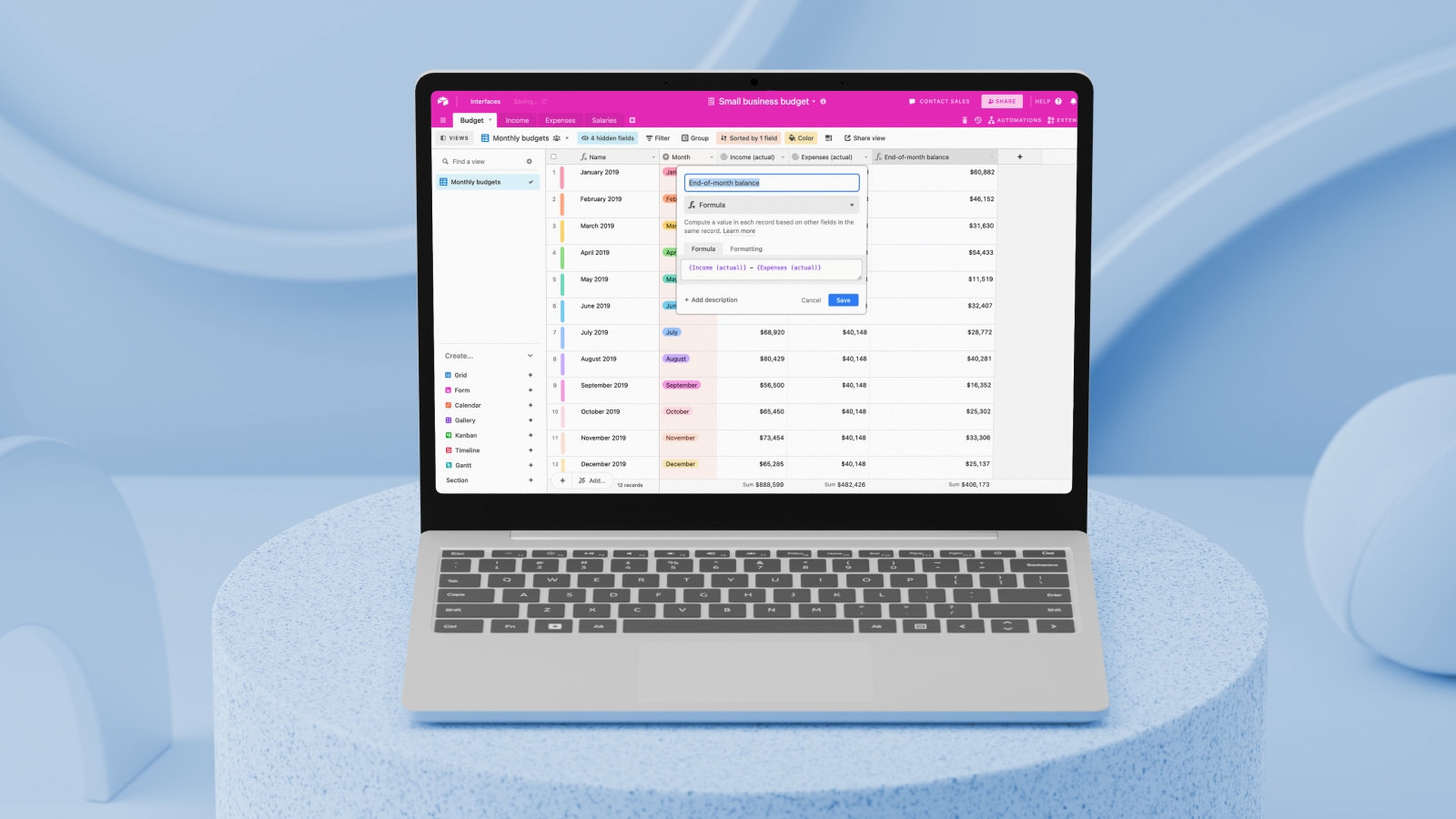Guides
1 OF 8
1 OF 8
Automate your work
Make your processes a little less manual by removing repetitive steps to save you and your team time.
Guide
2 of 8
Save time with Airtable Automations
See how powerful automations can speed up recurring steps in your process.
Guide
3 of 8
When (and how) to use computed fields
Here’s how to get started with computed fields to save time, and automate manual calculations.
Guide
4 of 8
Write your first formula
Learn the basics of what formulas are, and how they operate.
Guide
5 of 8
Explore what’s possible with formulas
Dive deeper on formulas, and learn just how powerful they can be.
Guide
6 of 8
Extend your workflow
Generate quick, visual charts, easily bring information in or out of your base, and more with extensions.
Guide
7 of 8
Using Extensions in Airtable
From adding charts to embedding webpages, learn how extensions add functionality to your base.
Guide
8 of 8
Building custom reports in Airtable
Turn good data into great reports with Airtable Extensions.






